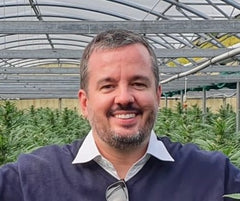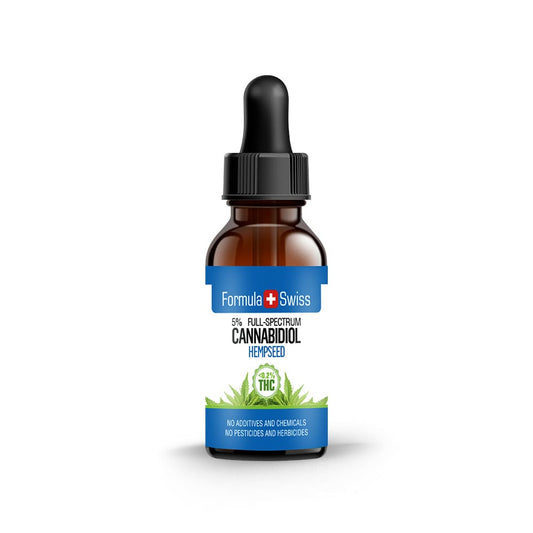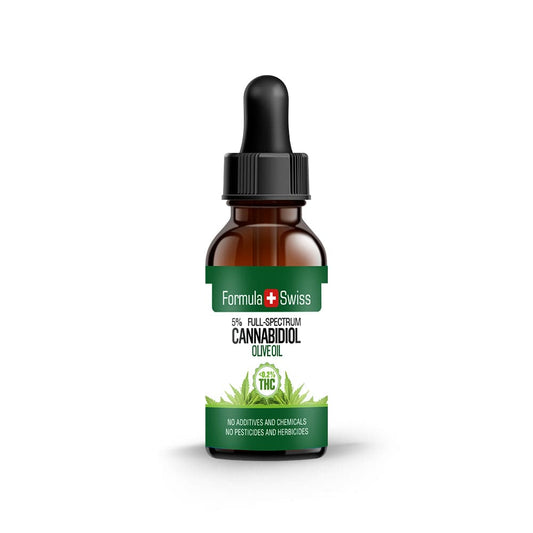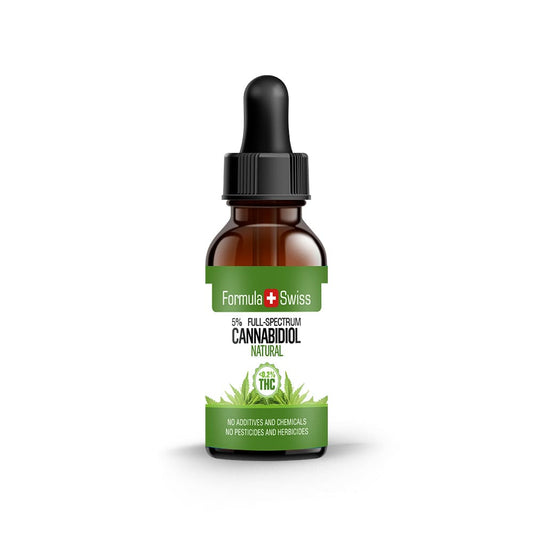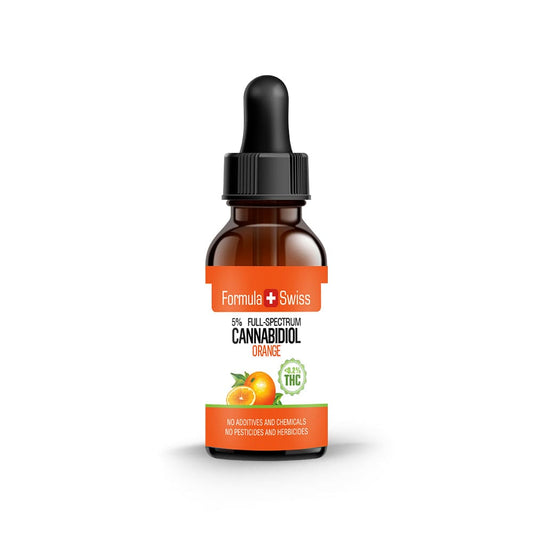THC, or tetrahydrocannabinol, is the primary psychoactive compound in the cannabis plant. With a history spanning thousands of years, cannabis has been used by humans for both medicinal and recreational purposes. Records of its cultivation and use date back to ancient civilisations, including those in China, Egypt, and Greece.
By the 19th century, cannabis was introduced to Europe for medicinal applications by scholars and physicians, contributing to its rising popularity. In 1964, researchers in Israel identified the structure of THC, a discovery that opened the door to greater insights into the endocannabinoid system.

Key Takeaways
- THC, or tetrahydrocannabinol, is the main psychoactive compound in the cannabis plant.
- Cannabis has a long history of both medicinal and recreational use.
- The use of cannabis for medicinal purposes was introduced to Europe in the 19th century.
- The structure of THC was determined in Israel in 1964, leading to advancements in research on its effects.
- The legal status of THC and cannabis has evolved over time, with some countries decriminalizing or legalizing it for various uses.
- I do not recommend using THC for recreational purposes.
This article is provided for informational purposes only and does not relate to any of the products available in our webshop. For more information, please see our full disclaimer.
Discovery of THC
The history of THC stretches back thousands of years, with its origins in the early discovery and cultivation of cannabis in Central Asia.
Evidence shows that cannabis, a plant rich in THC, was used by humans as far back as 12,000 years ago, with its cultivation gradually spreading to different regions. Ancient civilisations such as those in China, Egypt, and Greece recognized its value and integrated cannabis into their traditional practices.
In the 19th century, cannabis was introduced to Europe for medicinal purposes by scholars and physicians, where it grew in popularity. A major breakthrough came in 1964, when researchers in Israel identified the structure of THC, marking a significant step forward in understanding its role within the human body.
Today, cannabis continues to be a subject of research and discussion in both medical and recreational contexts. Studies into its effects and applications are ongoing, while the legal status of THC and cannabis varies worldwide, with some countries choosing to decriminalize or legalize their use.

| Region | Time Period |
|---|---|
| Ancient Central Asia | Around 12,000 years ago |
| Ancient China | Approximately 5,000 years ago |
| Ancient Egypt | Approximately 4,000 years ago |
| Ancient Greece | Approximately 2,800 years ago |
Evolution of Cannabis Cultivation and Medicinal Use
Over the centuries, cannabis cultivation and its medicinal use have spread from Central Asia to ancient China, Egypt, and Greece. The cannabis plant, known scientifically as Cannabis sativa, has been prized for its versatile properties and has played a significant role in various cultures throughout history.
In ancient China, cannabis was cultivated for its fibres, which were used to make textiles and ropes. The medicinal properties of cannabis were also recognized, and it was used in traditional Chinese medicine to treat various ailments, including pain and inflammation.
"The Chinese Emperor Fu Hsi (ca. 2900 BC), whom the Chinese credit with bringing civilisation to China, seems to have made reference to Ma, the Chinese word for Cannabis, noting that Cannabis was very popular medicine that possessed both yin and yang." - Hemp: American History Revisited: The Plant with a Divided History, 2003.
Ancient Egyptians utilized cannabis for both medicinal and religious purposes. The plant was considered sacred and was associated with the goddess Seshat. Cannabis was used in the preparation of ointments and oils, believed to have healing properties. It was also used in religious rituals and ceremonies.
Cannabis pollen is found on the mummy of Ramesses II, who died in 1213 BC. Prescriptions for cannabis in Ancient Egypt include treatment for the eyes (glaucoma), inflammation, and cooling the uterus, as well as administering enemas.
Bhang, a cannabis drink generally mixed with milk, is used as an anaesthetic and anti-phlegmatic in India from 1000 BC. Cannabis began to be used in India to treat a wide variety of human maladies.
In ancient Greece, cannabis was regarded for its medicinal properties as early as 200 BC. The physician Dioscorides documented its uses in his influential work De Materia Medica, noting its applications for easing pain, reducing inflammation, and serving as a sedative. Cannabis was also recognized for its psychoactive qualities and, in some contexts, was used recreationally.
After the 1500s, with the spread of Islam to India, Muslim physicians applied Persian medical theories to their use of cannabis. Their practices often emphasized its later effects rather than the immediate ones, employing it, for example, to reduce sexuality rather than to stimulate it.
Jesus Allegedly Uses Anointing Oil Made With Cannabis
Chris Bennett wrote the following in High Times Magazine in February 2003:
"In the Bible’s New Testament, Jesus... anointed [his disciples] with [a] potent entheogenic [psychoactive substance] oil, sending out the 12 apostles to do the same [around the year 30 AD]...
Likewise, after Jesus' passing, James suggests that anyone of the Christian community who was sick should call to the elders to anoint him with oil in the name of Jesus."
"So, did Jesus use cannabis? I think so. The word Christ does mean 'the anointed one' and Bennett contends that Christ was anointed with chrism, a cannabis-based oil, that caused his spiritual visions. The ancient recipe for this oil, recorded in Exodus, included over 9lb of flowering cannabis tops (known as kaneh-bosem in Hebrew), extracted into a hin (about 11? pints) of olive oil, with a variety of other herbs and spices. The mixture was used in anointing and fumigations that, significantly, allowed the priests and prophets to see and speak with Yahweh.
Residues of cannabis, moreover, have been detected in vessels from Judea and Egypt in a context indicating its medicinal, as well as visionary, use. Jesus is described by the apostle Mark as casting out demons and healing by the use of this holy chrism. Earlier, from the time of Moses until the later prophet Samuel, holy anointing oil was used by the shamanic Levite priesthood to receive the 'revelations of the Lord'. The chosen ones were drenched in this potent cannabis oil."

The cultivation and medicinal use of cannabis continued to evolve over time, with different cultures adopting their own practices and beliefs surrounding the plant. The spread of cannabis cultivation and its medicinal applications laid the foundation for its use in modern medicine and the ongoing research into its potential benefits.
Table: Traditional Uses of Cannabis in Different Cultures
| Culture | Medicinal Uses | Other Uses |
|---|---|---|
| Ancient China | Pain relief, anti-inflammatory | Textiles, ropes |
| Ancient Egypt | Healing ointments, oils | Religious rituals |
| Ancient Greece | Pain management, sedative | Recreational use |
"Cannabis has a rich history in various ancient cultures, where it was used for both medicinal and spiritual purposes. The cultivation and use of cannabis spread across continents, shaping the practices and beliefs of different civilisations throughout history." - Dr. Elizabeth Lawson, Harvard Medical School
As our understanding of cannabis continues to grow, so does our knowledge of its potential medicinal uses. From ancient civilisations to modern research, cannabis remains a fascinating plant with a long and storied history.
The History of Medicinal Cannabis in Europe
When Napoleon invaded Egypt in 1799, his forces included a scientific expedition team. Alongside the discovery of the Rosetta Stone, the team brought cannabis back to France, where it was studied in Europe for its pain-relieving and sedative properties and gradually gained wider acceptance in Western medicine.
In the 19th century, scholars and physicians introduced medicinal cannabis more broadly across Europe, marking a turning point in the history of THC, the psychoactive compound in the cannabis plant. Interest in its potential applications grew, and its use became a subject of increasing study.
During this period, European physicians explored the reported properties of THC and began prescribing cannabis-based preparations in medical practice. Its potential to address conditions such as chronic pain, epilepsy, and multiple sclerosis drew particular attention.
The introduction of medicinal cannabis to Europe also spurred scientific investigation into how THC works within the body. This research eventually led to the discovery of the endocannabinoid system, a network of receptors that interacts with THC and other cannabinoids. This breakthrough paved the way for deeper exploration into cannabis and its applications.
Advancements in Medical Cannabis Research
As understanding of THC advanced, research expanded to examine its potential applications. Studies investigated its use in areas such as managing chronic pain, addressing nausea, supporting appetite in patients undergoing chemotherapy, and exploring its role in reducing the frequency and severity of seizures in individuals with epilepsy.
Research has also looked at different methods of applying THC, including inhalation and topical use. This work has supported the development of a range of THC-based formulations, including oils, capsules, and creams, designed for use in line with relevant regulations and product classifications.
| Medicinal Uses of THC | |
|---|---|
| Pain management | Relieves chronic pain and neuropathic pain |
| Nausea and vomiting | Reduces symptoms associated with chemotherapy-induced nausea and vomiting |
| Epilepsy | Reduces seizures in certain types of epilepsy |
| Appetite stimulation | Helps increase appetite in patients with reduced food intake |
 The medical uses of THC continue to be studied and expanded upon, with ongoing research exploring its potential in areas such as mental health, neurodegenerative diseases, and cancer treatment. As societal attitudes towards cannabis evolve and more countries embrace its medical benefits, the future of THC research holds promise for improved patient care and well-being.
The medical uses of THC continue to be studied and expanded upon, with ongoing research exploring its potential in areas such as mental health, neurodegenerative diseases, and cancer treatment. As societal attitudes towards cannabis evolve and more countries embrace its medical benefits, the future of THC research holds promise for improved patient care and well-being.
Structure of THC and Advancements in Research
The structure of THC was identified in Israel in 1964, marking a breakthrough that advanced the understanding of cannabinoids and the endocannabinoid system. Since then, this psychoactive compound from the cannabis plant has been the focus of extensive research into its potential effects and applications.
Scientists have discovered that THC interacts with the body's endocannabinoid system, a network of receptors and molecules involved in regulating physiological processes. This interaction influences the release of neurotransmitters and can impact mood, appetite, pain perception, and immune function.
Ongoing studies have also examined how THC may be applied in different contexts. Research has explored its role in areas such as managing chronic pain, addressing nausea and vomiting linked to chemotherapy, and supporting appetite in patients with wasting syndrome.
More recently, researchers have investigated the potential of THC in neurological conditions including epilepsy and multiple sclerosis. Early findings point to possible neuroprotective properties, encouraging further exploration into its role in these areas.
| Advancements in THC Research | Potential Health Effects of THC |
|---|---|
| - Determination of THC's structure | - Management of chronic pain |
| - Understanding the endocannabinoid system | - Reduction of chemotherapy-induced nausea and vomiting |
| - Therapeutic applications of THC | - Stimulation of appetite in patients with wasting syndrome |
| - Investigation of THC's effects on neurological disorders | - Potential neuroprotective effects |
As research into THC advances, scientists continue to uncover new insights into its mechanisms of action and possible applications. Ongoing exploration of both its benefits and risks is essential for developing safe and well-regulated uses.
THC has been studied for a variety of potential applications and is increasingly recognized in research for its possible therapeutic value. Its use has been examined across several areas of healthcare, with growing interest in its effects.
One of the most studied areas is the role of THC in pain management. Research has investigated its ability to influence pain perception in conditions such as multiple sclerosis, cancer, and neuropathic pain through interactions with the body’s endocannabinoid system.
Studies have also highlighted THC’s antiemetic properties, noting its role in reducing nausea and vomiting associated with chemotherapy and certain treatments. In addition, it has been observed to stimulate appetite, which may be relevant for individuals experiencing appetite loss during medical care.

| Medical Uses of THC | Benefits |
|---|---|
| Chronic pain management | Reduction in pain levels |
| Nausea and vomiting associated with chemotherapy | Alleviation of symptoms |
| Appetite stimulation | Improved appetite |
Despite its potential medical benefits, the legality of THC and medical marijuana varies across different countries and regions. Some countries have legalized the use of medical marijuana, allowing patients to access THC-based medications with a prescription. However, it is important to note that the laws surrounding THC and medical marijuana can be complex and subject to change.
Recreational Use of THC
THC is the compound responsible for the psychoactive effects of cannabis, making it widely associated with recreational use. When used, it interacts with cannabinoid receptors in the brain, leading to altered perceptions, shifts in mood, and sensations of relaxation or euphoria.
Recreational use of cannabis has a long history, with evidence dating back to ancient civilisations. In China, cannabis was noted in early texts for both medicinal and recreational purposes, including its ability to induce euphoria. Ancient Greek and Egyptian cultures also valued its psychoactive effects, often using cannabis for relaxation and social activities.
Over time, recreational use has persisted in various forms, from smoking and vaporising to other regulated applications. In recent years, the availability of THC-containing products has expanded significantly, reflecting broader consumer interest in experiences linked to its psychoactive properties.
It is important to recognize, however, that recreational use carries potential risks. While many associate THC with relaxation and enjoyment, prolonged or excessive use may contribute to effects such as anxiety, paranoia, or reduced cognitive performance. Responsible use and awareness of these risks remain essential.
| Pros of Recreational Marijuana Use | Cons of Recreational Marijuana Use |
|---|---|
|
|
Recreational cannabis use can offer relaxation and a sense of euphoria, often making it a popular choice in social or leisure settings. Still, it is important to approach use responsibly and remain mindful of the potential downsides.
Personally, I have never used THC or any other psychoactive drug for recreational use. Even if it was completely legal, I would be reluctant to use it for just recreational purposes, but we are all different and most of my colleagues in the cannabis industry don't share this opinion.
Exploring Different Strains and Application Methods
THC content can vary among different strains of cannabis, with some strains having higher levels of THC than others. This allows individuals to choose a strain that aligns with their desired recreational experience. Additionally, there are various application methods available, each offering a unique way to experience the psychoactive effects of THC.
Common methods of applying THC in regulated contexts include smoking dried cannabis flowers, vaporising concentrates, and using THC-infused formulations classified for specific use types. Each method has its own onset time and duration of effects, allowing users to tailor their experience based on personal preferences and desired outcomes.
Legal Status of THC
The legal status of THC and cannabis has seen significant changes over time, with some countries decriminalizing or legalizing it for various uses.
In the United Kingdom, THC is classified as a controlled substance under the Misuse of Drugs Act 1971. This means that the production, possession, and supply of THC are illegal, except in certain restricted circumstances.
However, there has been a growing recognition of the potential medicinal benefits of THC, leading to the development of medical marijuana programs in some parts of the world.
In the UK, medicinal cannabis was legalized in 2018, allowing specialist doctors to prescribe cannabis-based medicines containing THC to patients with certain conditions, such as epilepsy and multiple sclerosis.
On the other hand, recreational use of THC and cannabis remains illegal in the UK, with possession and supply offences carrying criminal penalties. Despite this, there have been ongoing debates about the potential decriminalisation or legalisation of recreational marijuana use, with some arguing that it could help reduce drug-related harms and generate tax revenue.
It is important to note that the legal status of THC varies from country to country, with some jurisdictions taking a more liberal approach towards its regulation. As attitudes and scientific understanding continue to evolve, it is likely that the legal landscape surrounding THC will continue to change.
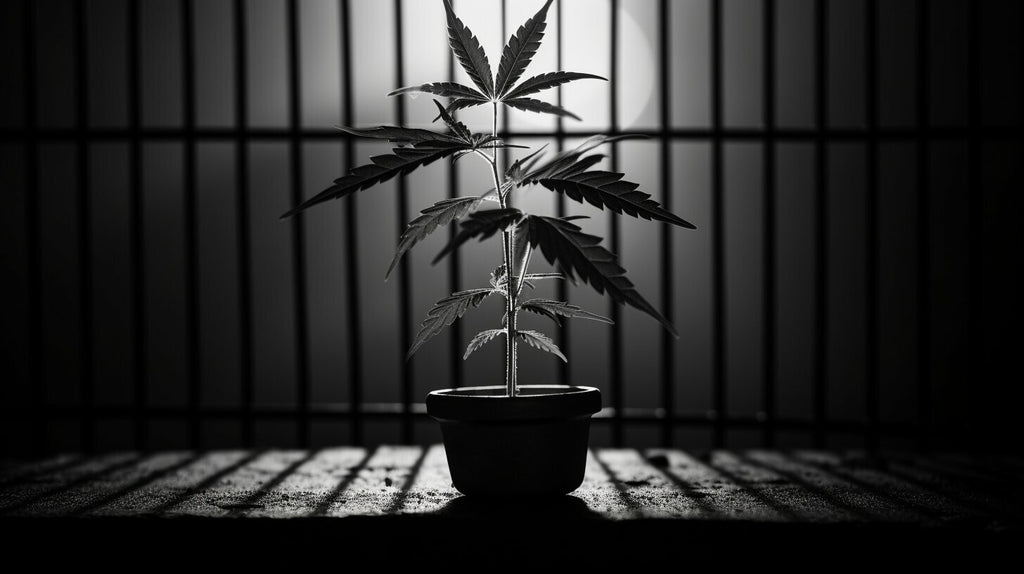
As I am writing this article, this is the most recent information, I could find on the legal status for the following counties.
| Country | Legal Status |
|---|---|
| Albania | Illegal for recreational use, Legal for medical use since July 2023, when the Albanian Parliament voted 69–23 to legalize medical cannabis. |
| Argentina | Decriminalized for small amounts and private use, as ruled by the Supreme Court in 2009. Medicinal cannabis has been legal nationally since 21 September 2017. |
| Barbados | Legal for spiritual use by registered Rastafarians. Legal for medical use. |
| Belgium | Possession of cannabis has been decriminalized for adults over 18 for up to 3g or cultivation of one plant. Medical use is allowed using certain cannabis-derived pharmaceuticals like Sativex. |
| Chile | Private personal use and recreational cultivation decriminalized. Medicinal cultivation legal with the authorisation of The Chilean Agriculture Service (SAG) and sale of medication allowed on prescription in pharmacies. |
| Colombia | Decriminalized up to 22 g or cultivation of 20 plants for personal use. Legal for medical use. |
| Czech Republic | Decriminalized up to 10 g or cultivation of 5 plants. Legal for medical use. |
| Denmark | Illegal for recreational use, Legal for medical use |
| Finland | Illegal but sometimes not enforced. Legal under license for medical use. |
| France | Illegal, on-the-spot fines are usually issued in place of prosecution. A two-year trial program involving 3,000 patients for medical use is underway. |
| Germany | Illegal, but may not be prosecuted if possession is in small quantities and for personal use. Legal for medical use. |
| India | Illegal, but exception is made for the use of bhang. CBD oil is legal, less than 0.3% THC. |
| Israel | Decriminalized, Legal for medical use |
| Italy | Possession decriminalized; home cultivation legal in small amounts for personal use, Legal for medical use |
| Jamaica | Decriminalized up to 2 oz or cultivation of 5 plants. Legal for Rastafari, Legal for medical use |
| Japan | Strictly illegal for all purposes |
| Luxembourg | Legal to grow up to 4 plants at home for personal use. Possession of up to 3 g outside the home is decriminalized, Legal for medical use |
| Mexico | Decriminalized up to 5 g. Legal for medical use |
| New Zealand | Illegal for recreational use. Legal for medical use |
| Norway | Illegal for all purposes. |
| Peru | Decriminalized for personal use, Legal for medical use |
| Poland | Illegal for recreational use, Legal for medical use |
| Portugal | Decriminalized, Not legal but tolerated in certain circumstances for medical use |
| Russia | Illegal for all purposes |
| South Africa | Decriminalized for personal use and cultivation, Not legal but allowed in certain circumstances for medical use |
| South Korea | Illegal for all purposes |
| Spain | Decriminalized for private use and cultivation, Not legal but available in certain circumstances for medical use |
| Sweden | Illegal for all purposes |
| Switzerland | Decriminalized up to 10 g, Legal CBD with up to 1% THC, Not legal but available in certain circumstances for medical use |
| Ukraine | Illegal for all purposes |
| United Arab Emirates | Strictly illegal for all purposes |
| United Kingdom | Illegal for recreational use, Legal for medical use |
| Uruguay | First country to fully legalize cannabis |
| Venezuela | Illegal for all purposes |
| Zimbabwe | Illegal for recreational use, Legal for medical and scientific use |
"The legal status of THC is a complex issue, with different countries taking varying approaches to its regulation. While there is growing acceptance of its medicinal benefits, the recreational use of THC remains a contentious topic. As the scientific understanding of cannabis continues to develop, it is crucial to strike a balance between ensuring public health and safety while also exploring its potential therapeutic applications." - Dr. Jane Richardson, Cannabis Research Institute
THC Side Effects and Addiction
While THC can provide benefits, it is important to be aware of potential side effects and the risk of addiction. THC, the main psychoactive component of cannabis, can cause short-term and long-term side effects. Common short-term side effects of THC use include impaired memory, altered perception of time, increased heart rate, and dry mouth. These effects can vary depending on the individual and the amount of application, but they generally subside after the high wears off.
Long-term use of THC has been associated with a range of potential side effects. These include cognitive impairments, such as difficulties with attention, learning, and memory. Chronic use of THC may also lead to respiratory issues, such as bronchitis, and an increased risk of mental health disorders, particularly in individuals predisposed to these conditions. Additionally, heavy and prolonged use of THC has been linked to the development of cannabis use disorder, characterized by a loss of control over cannabis use and negative impacts on various areas of life.
It is crucial for individuals using THC to be mindful of their use habits and to monitor any potential side effects or signs of addiction. Seeking professional advice and support can be beneficial for those who want to better understand and manage the potential risks associated with THC use.
Table: Common Side Effects of THC
| Side Effects | Description |
|---|---|
| Impaired memory | Difficulty retaining and recalling information |
| Altered perception of time | Distorted sense of time passing |
| Increased heart rate | Elevated heart rate, potentially causing palpitations |
| Dry mouth | Reduced saliva production, resulting in a dry sensation in the mouth |
The risk of developing an addiction to THC, like with other psychoactive substances, can vary from person to person. While most individuals who use THC do not experience addiction, some may be more vulnerable due to genetic factors or underlying mental health conditions. THC addiction is generally characterized by a compulsive urge to use cannabis, difficulty controlling or reducing intake, and withdrawal symptoms when use is stopped. Approaching THC use responsibly and staying alert to signs of dependence is important.
As with any substance, it is essential to weigh both the potential risks and benefits of THC before use. Seeking guidance from healthcare professionals and keeping up to date with current research and regulations can help individuals make informed choices. Equally, compliance with the laws of one’s country or state is a necessary consideration.

THC is available in a wide variety of products, including dried flowers, oils, tinctures, and edibles, each offering different methods of use. These formats allow individuals to tailor their experience according to preference and context.
Dried flowers: Often referred to as cannabis buds, dried flowers are the most traditional form of THC product. They are commonly smoked in joints or pipes, producing fast-acting effects. Potency and flavour can vary significantly across strains, providing a range of possible experiences.
Edibles: THC-infused foods such as gummies, chocolates, and baked goods provide a discreet and convenient option. Because edibles are metabolized differently, their effects tend to be longer-lasting and more intense compared to inhalation. Starting with a low dose and allowing time for the effects to appear is generally advised.
Oils and tinctures: These concentrated products can be applied sublingually (under the tongue) or, in some cases, topically. They offer a precise and measured approach to THC use, with the onset of effects depending on the method of application.
Table: THC products and application methods
| Product | Application Method |
|---|---|
| Dried flowers | Smoking, vaping |
| Edibles | Products formulated for non-topical use |
| Oils and tinctures | Sublingual, topical |
The effects of THC can vary depending on factors such as product type, dosage, and individual tolerance. Legal status also differs worldwide: while some countries have legalized both medical and recreational cannabis, others maintain strict regulations. It is essential to be aware of local laws before purchasing or using THC products.

Beyond its regulated medical applications, research has examined how THC may influence areas such as pain management and appetite stimulation. Studies suggest that THC, as the main psychoactive compound in cannabis, interacts with the body’s endocannabinoid system, which plays a role in pain perception. By binding to cannabinoid receptors in the brain and spinal cord, it may alter pain signals and provide temporary relief.
Research has also explored THC’s role in appetite stimulation, particularly for individuals undergoing chemotherapy or experiencing appetite loss. Activation of cannabinoid receptors in the brain’s reward and appetite centres has been linked to increased hunger and greater enjoyment of food, which may support nutritional intake for those struggling with reduced appetite.
At the same time, THC’s psychoactive properties can produce side effects. These may include impaired coordination, changes in memory and cognitive function, increased heart rate, or temporary anxiety and paranoia. Whether used recreationally or in medical contexts, awareness of these effects and responsible use are essential. Consulting a healthcare professional is advisable to ensure safe and appropriate use.

| Health Effects of THC | Potential Benefits |
|---|---|
| Pain Management | Relief for chronic pain conditions |
| Appetite Stimulation | Increase in hunger and enjoyment of eating |
| Side Effects | Impaired coordination, memory and cognitive function, increased heart rate, temporary anxiety or paranoia |
THC Research and Future Developments
Ongoing research into THC continues to expand scientific understanding of its potential applications and may contribute to future developments in medical use. Researchers are exploring a range of areas to better understand the role of this compound derived from the cannabis plant.
One key focus is THC’s influence on pain management. Studies have examined how it interacts with the body’s endocannabinoid system, which plays a role in regulating pain perception. This research has informed the development of THC-based medications aimed at addressing conditions such as neuropathic pain and multiple sclerosis.
Another area of study looks at the potential anti-cancer properties of THC. Preclinical findings have suggested that it may affect tumour growth and trigger apoptosis, or programmed cell death, in certain cancer cell types. These results highlight the need for further investigation into THC’s possible role as an adjunct in cancer research.
Alongside these studies, scientists are also working to develop safer and more efficient delivery methods for THC. Research is exploring alternatives such as transdermal patches, inhalation devices, and oral formulations, offering more personalized approaches to administration.
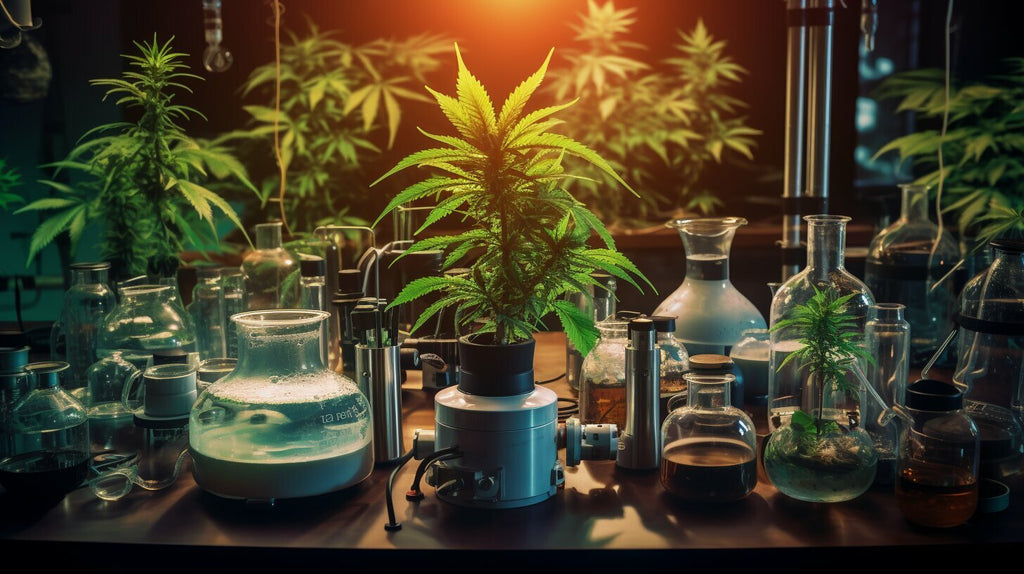
| Research Focus | Findings |
|---|---|
| Pain management | THC has shown promise in alleviating chronic pain conditions. |
| Cancer treatment | THC exhibits potential anti-cancer properties and may be used as an adjunct therapy. |
| Delivery methods | Research is ongoing to develop safer and more effective ways to administer THC. |
As research into THC continues to advance, it is crucial to consider the potential benefits and risks associated with its use. While medical marijuana and cannabis-based therapies hold promise for various conditions, further studies are needed to fully understand the long-term effects and potential interactions with other medications.
Overall, ongoing THC research shows promising potential for the future of medical cannabis and its applications. As scientists and medical professionals delve deeper into this field, there is hope for novel treatments, improved delivery methods, and a better understanding of the therapeutic benefits that THC can provide.
Conclusion on the History of THC
The history of THC is a remarkable account of its discovery, development, and role in both medical and recreational cannabis use in the UK and worldwide. THC, the primary psychoactive component of cannabis, has been part of human culture for thousands of years. Its earliest recorded use dates back around 12,000 years in Central Asia, with cultivation and medicinal practices spreading through ancient China, Egypt, and Greece.
By the 19th century, scholars and physicians had introduced cannabis for medicinal purposes in Europe, sparking widespread interest in its potential. A major milestone came in 1964, when researchers in Israel identified the structure of THC, significantly advancing knowledge of cannabinoids and the endocannabinoid system. This discovery opened the door to deeper exploration of THC’s possible medical applications.
Today, cannabis is used in both medical and recreational contexts, though its legal status continues to evolve. Some countries have decriminalized or legalized cannabis for certain uses, while others maintain stricter controls. In the United Kingdom, medical cannabis is legal for specific conditions under prescription, while recreational use remains prohibited.
As scientific research continues, THC remains an important focus of study. Ongoing investigations aim to better understand its effects and refine its potential applications, shaping the future of cannabis in medicine and beyond.
Frequently Asked Questions
What is THC?
THC, or tetrahydrocannabinol, is the main psychoactive compound found in the cannabis plant.
How long has THC been used by humans?
THC has been used by humans for thousands of years, with cannabis first being used around 12,000 years ago in Central Asia.
What are the medicinal uses of THC?
THC has been used medicinally throughout history for various purposes, including pain relief, nausea reduction, and appetite stimulation.
When was THC discovered?
THC was discovered and its structure determined in Israel in 1964, leading to advancements in the understanding of the endocannabinoid system.
Is THC legal?
The legal status of THC varies by country and region. Some countries have decriminalized or legalized THC for both medicinal and recreational use.
What are the side effects of THC?
THC can have potential side effects, including paranoia, memory impairment, and increased heart rate. Long-term use may also lead to addiction.
What products contain THC?
THC can be found in various cannabis products, such as edibles, oils, and dried flowers. The concentration of THC may vary depending on the product.
What are the health effects of THC?
Beyond its medicinal uses, THC has potential health effects that are still being explored, including its potential impact on mental health and neurodevelopment.
What is the future of THC research?
THC research is ongoing, and future developments may uncover additional medical applications for THC and its potential therapeutic benefits.



